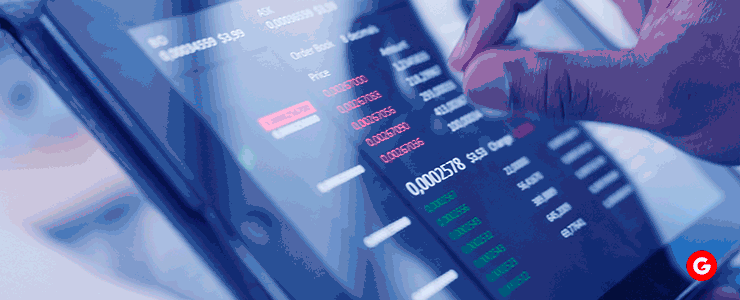Forex trading can be profitable if you know the basics or are too scared to invest a hefty amount of money while unaware of the working process of forex trading.
Are you new to trading? Margin trading can be a tempting tool, but a proper understanding of its potential benefits and risks of margin trading is crucial.
Margin trading is a strategy employed in the forex market that allows traders to leverage borrowed capital from a brokerage firm to purchase assets. This enables them to initiate trades with a larger sum than their capital, potentially amplifying profits.
However, it’s important to recognize the risks of margin trading. If the value of the acquired assets declines, traders could owe the brokerage more than their initial investment.
Margin trading allows investors to control a larger position than their available capital would typically permit.

What is Margin Trading?
Margin trading promises multiplied returns by allowing you to invest more than your current capital. This is achieved by making a smaller initial deposit and essentially borrowing the rest from a brokerage firm.
While this strategy can magnify potential profits, it’s critical to remember the magnified risks as well. Losses are calculated based on the entire investment, not just your down payment, potentially exceeding your initial deposit.
While margin trading can offer the potential for magnified returns, it also carries with it several risks of margin trading shall always be involved.
You should know that Handling the entire margin trading process is integral to mitigating these risks, as losses can also be multiplied.
Margin trading is a powerful tool that can enhance investment opportunities. However, before utilizing this strategy, it’s crucial to understand its inherent risks.
How Does Margin Trading Work?
Margin trading offers a way to invest in assets like stocks or forex without needing a full upfront cost, which can be hefty. It functions like a layaway plan, allowing you to secure a position with a smaller initial deposit, typically expressed as a percentage of the total value.
The specific margin requirement varies depending on the asset, your broker’s policy, and multiple other factors. Similar to a layaway plan where a high-priced item might require a larger down payment, assets with higher volatility or larger positions may necessitate a bigger initial deposit from the trader.
Rewards of Margin Trading
Margin trading can be a tempting strategy for investors looking to increase their buying power in the stock market. Instead of needing the full money to buy a stock, you can pay a smaller percentage depending on the broker and the asset.
This allows you to control more shares than your current account balance would normally allow.
It allows you to magnify your profits. Since any gains are calculated on the full value of the investment, not just the deposit you make, a successful trade can lead to much bigger returns than a standard purchase.
In addition, margin trading lets you spread your capital further by allowing you to invest in a wider range of assets. However, you must remember that several risks are associated with margin trading.
Risks of Margin Trading
Margin trading has its risks. While it can magnify your gains if the stock price goes up, it can also magnify your losses if the price goes down. This is because you owe money on the entire investment, not just the amount you deposited. You could end up losing more than you initially invested. This is one of the biggest risks of margin trading.
Brokers set a minimum account value requirement to manage this risk, called the maintenance margin. If your account’s value falls below this level due to losing investments, your broker might call you for a margin call.
You may need to add more money to your account or sell some of your holdings to cover the loan. If you can’t do either, your broker might be forced to sell your stocks for you, which could lock in your losses.

How to Tackle Margin Trading?
To get into margin trading, you need to understand the basics of leverage and the risks involved. Remember to use prudent risk management strategies such as setting stop-loss orders and only investing money you can afford to lose.
Educate yourself thoroughly on the market conditions and trading techniques. Always start with smaller leverages to minimize risks and gradually increase as you gain more experience and confidence.
Here’s how FXGiants can help its users:
- Quick Sign-Up: No need for lengthy applications. Open your account in minutes and get trading fast.
- Easy Funding: You can quickly deposit funds into your account using various methods, such as debit cards or bank transfers.
- Fast Withdrawals: Access your profits whenever needed with FXGiants’ secure and speedy withdrawal system.
- User-Friendly Platform: Forget complicated interfaces. FXGiants’ platform is easy to navigate, so you can focus on making winning trades. This streamlined design lets you spend more time analyzing the market and less time wrestling with the platform.
FAQs
Is margin trading profitable?
Margin trading offers many more opportunities that can prove profitable compared to traditional trading practices. But the risks of margin trading are multiplied.
Does trading on Margin increase the risk of loss?
In margin trading, there is a chance that you may lose more money than what you had initially invested. This is one of the risks of margin trading in forex.
Conclusion
Margin trading can potentially be a way for you to increase your returns, but it’s crucial to understand the risks of margin trading and only use it with caution and with a clear understanding of the same.
Before implementing margin trading, ensure you have a solid understanding of the market, a risk management strategy, and enough capital to meet potential margin calls.
DISCLAIMER: This information is not considered investment advice or an investment recommendation, but is instead a marketing communication
